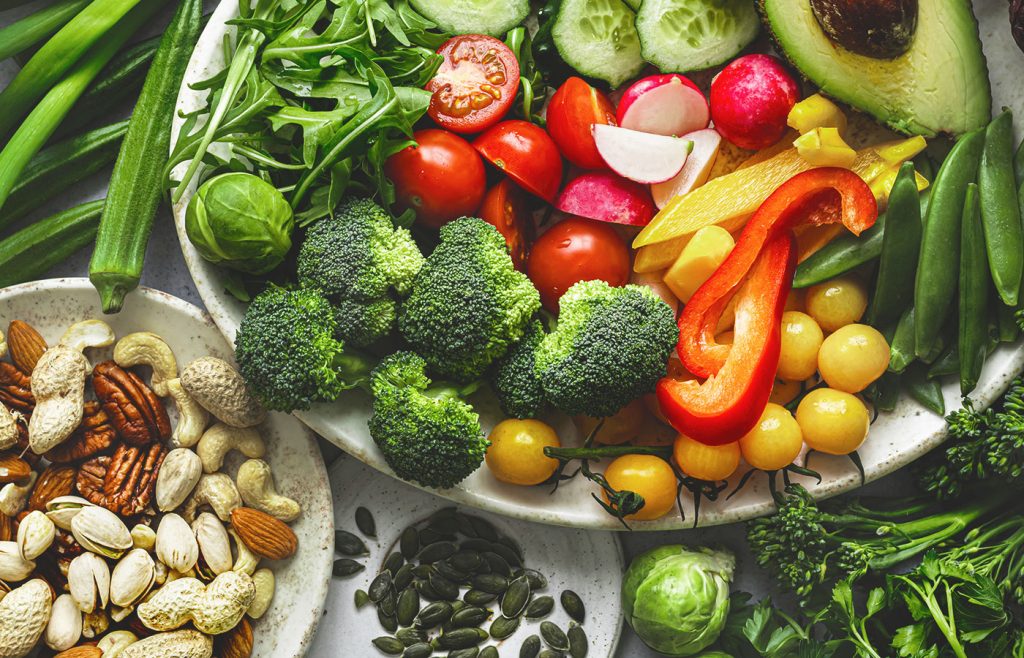Last updated on July 15th, 2021
A common scenario
A girl might be 10 years old, and life is good. Her energy is fine. She might have some challenges with friends at school from time to time, but otherwise, everything is okay. As she gets a bit older, her breasts start to bud and her hips start to broaden and to do this the body usually has to store some more body fat. This is the result of an increase in estrogen production. Some girls feel a bit “puffy” or swollen as this occurs, and this can be distressing for some of them as they feel or are told that they look “fat”. After a few months of her family noticing that she has become somewhat moody—not every day, but a few times a week she might be snappy, for example—everyone writes it off as “stress” at school or jokes that the “hormones must be starting”.
Then menstruation begins, and for so many girls today the loss of menstrual blood is heavy, painful, and clotty, right from the beginning. Days at school are missed each month. Sport is interrupted too. Sometimes menstruation is regular; other times, months are missed. But when it comes, it is so very painful.
Let’s take a deeper look at this scenario and what all of this really means.
Pituitary gland
When a girl first starts to menstruate, it is the first time that her pituitary gland, at the base of her brain, has ever attempted to cyclically communicate with her ovaries. Each month, her pituitary gland sends messages via hormones to her ovaries that stimulate an egg to ripen and enable ovulation. However, initially, this pathway of communication between the pituitary and the ovaries is somewhat like a goat track—it’s not well established or clear. Sometimes the messages get through; sometimes they miss. It takes about five years for these pathways of communication to become like a five-lane highway.
Estrogen
As you read in the scenario above, estrogen is the first female sex hormone to be made in any great quantity in a girl’s body. As beautiful as estrogen can be as a hormone, it can also wreak havoc when it is present in excessive amounts and/or without the buffering effects of another hormone – progesterone. An excess of estrogen is often what makes periods heavy, clotty and painful in the first place. When a girl first starts to menstruate, she can easily be in a state of estrogen excess (or ‘estrogen dominant’ in the later part of her cycle), until regular, cyclical ovulation is established.
Supporting both estrogen metabolism and progesterone production can assist in helping a newly menstruating female to innately balance her hormones and ease the symptoms of estrogen excess.
Supporting estrogen metabolism
Once a unit of estrogen has been made and done its job, it cannot be immediately eliminated. Its structure first has to be changed (detoxified) by the liver and the gut also plays a role. To put it simply, the liver is responsible for an endless list of tasks, so it prioritises what it needs to detoxify. Because the body makes estrogen itself, the liver doesn’t see it as a high priority item. Instead, it will prioritise dealing with potentially problematic substances we’re exposed to in our environment via what we eat, drink, absorb through our skin, and inhale. Remember too, that some environmental pollutants, such as pesticides, herbicides, and substances in plastics (please never heat plastic of any kind; this means don’t put it in the dishwasher), can mimic estrogen, adding to your load. Reducing your exposure to what I refer to as ‘liver loaders’, helps the liver to do its job more efficiently.
To prepare estrogen for elimination, it must undergo two phases of detoxification in the liver and one in the gut. Imagine that the pathways along which estrogen needs to travel to be detoxified are like lanes on a motorway. As the estrogen tries to merge into the traffic, if there’s congestion already there (from the rubbish in ultra-processed food, drinks, skincare etc.), the estrogen has to slow down rather than effortlessly merge into the traffic. That’s phase 1 – you don’t want estrogen to have to slow down or be unable to merge. Once estrogen is successfully through phase 1, its structure has been slightly changed and now it is ready to travel along the phase 2 pathways. The challenge is, these roads might be even more congested (due to lousy lifestyle choices, nutrient deficiencies and/or genetics), making it difficult or slow for estrogen to complete its liver detoxification. All of these factors contribute further to a state of estrogen excess. Once a unit of estrogen gets through these two phases in the liver, imagine it is delivered to the gut inside an envelope. Ideally, the envelope stays sealed and you eliminate this estrogen in your faeces. However, if you have too many lousy types of gut bacteria (rather than plenty of good ones), they can produce an enzyme (beta-glucuronidase) that can open the envelope. This ‘reactivates’ the estrogen and you recycle it, adding even further to the excess estrogen.

Ways to support estrogen detoxification
- Eat a wide variety of whole, real foods, including plenty of plants
- Incorporate Brassica vegetables into your diet daily; these include broccoli, cauliflower, kale, cabbage, Brussels sprouts. Broccoli and broccoli sprouts contain some of the highest levels of the substances you need for efficient estrogen detoxification
- Minimise ‘liver loaders’ such as synthetic, ‘fake’ ingredients found in many ultra-processed foods, caffeine, and household cleaning and beauty products made from endocrine-disrupting chemicals, such as parabens
- A dairy free way of eating for two months or two menstrual cycles (as a trial initially); it must be done super strictly for the trial period to see if this will make a difference; read all food labels
- Ensure adequate hydration: – for a teenage girl this is about 2L per day
- Significantly minimise/remove refined sugars (minimising processed foods and drinks can be a simpler focus)
- Ensure bowel movements are occurring daily (helpful tips here)
- Incorporate an organic green drink: powdered/ground green vegetables and grasses that you add to water. Good quality, organic green powders can offer concentrated sources of some key active ingredients that help support efficient liver detoxification, particularly estrogen metabolism.
Progesterone
Progesterone can be thought of as the cool, calm and collected hormone and its production is something we really want to help foster in our teens. Progesterone plays a role in maintaining the lining of the endometrium in the second stage of the menstrual cycle – estrogen lays it down and progesterone holds it in place. Yet it also acts as a natural anti-depressant, an anti-anxiety agent, and it is a diuretic, meaning that it allows a female to get rid of any excess fluid (recall the ‘puffiness’ mentioned in the scenario above). Once a female has started to menstruate, the main place from which she makes progesterone is her ovaries, but this only happens after she has ovulated – progesterone is made from the crater that remains on the surface of the ovary (the corpus luteum) after the egg has been released. And if she’s not ovulating because the pituitary-ovarian communication axis is still being established, or due to relentless stress hormone production, nutrient deficiencies, or she takes the Pill (to name just a few reasons), then her body is not able to make this monthly supply of progesterone and she misses out on all of its biological benefits.
Adrenal progesterone
The other place her body will make progesterone from is the adrenal glands; however, a good way to imagine this, is that it will do so only if the body believes she is “safe”. So, if she is churning out adrenaline and cortisol because she is worrying about her grades, what her friends are saying, boys, girls, fitting in, that her clothes don’t fit the way they used to, or there’s discord at home, for example, then her body can easily get the message that her life is in danger and that there is no food left in the world (because historically that’s what these two stress hormones have communicated to the body). Moreover, the female body links progesterone to fertility (because most of it is made after ovulation), so the last thing it wants is to bring a baby into a world where it perceives she is not safe and where there is no food. So, her body will likely shut down the adrenal production of progesterone, thinking it is doing her a great, big favour. Park the fertility aspect of what I have just said and consider the other biological consequences of low or no progesterone production: low mood, anxieties, fluid retention.

Ways to support progesterone production
- Implement stress management techniques such as spending time in nature, embracing activities that bring joy to your daughter, encourage conversations, run a nice warm bath with Epsom salts and lavender oil to enhance relaxation and magnesium for muscle relaxation, a daily breath-focused practice such as Stillness Through Movement, yin yoga, tai chi, meditation, journaling
- Create a new habit of not using backlit devices such as TVs, computers, smartphones, and tablets for 90 minutes prior to sleep as these emit a sleep-disturbing light.
- Assess nutrient deficiencies such as zinc, selenium, magnesium, vitamin B6, vitamin D
- Increase food sources of zinc (oysters, red meat, eggs, seeds), selenium (Brazil nuts), magnesium (green leafy vegies, nuts, seeds), and vitamin B6 (beef liver, fish, poultry, chickpeas, green leafy vegies, bananas) and support safe sun exposure for vitamin D
- Herbal medicine may be appropriate (if guided by a medical herbalist): Paeonia and licorice is a synergistic combination of herbs that can help to support pituitary-ovarian communication and hence regular, cyclical ovulation.
Please remember, it’s important to give the teenage body time during this phase to establish clear communication between the pituitary and the ovaries that fosters regular ovulation. This transition doesn’t need to be uncomfortable or life-limiting.
For further support, you can learn more via my online webinar ‘Period Problems’ here.
Some of this content is from my book ‘Exhausted to Energised’.









